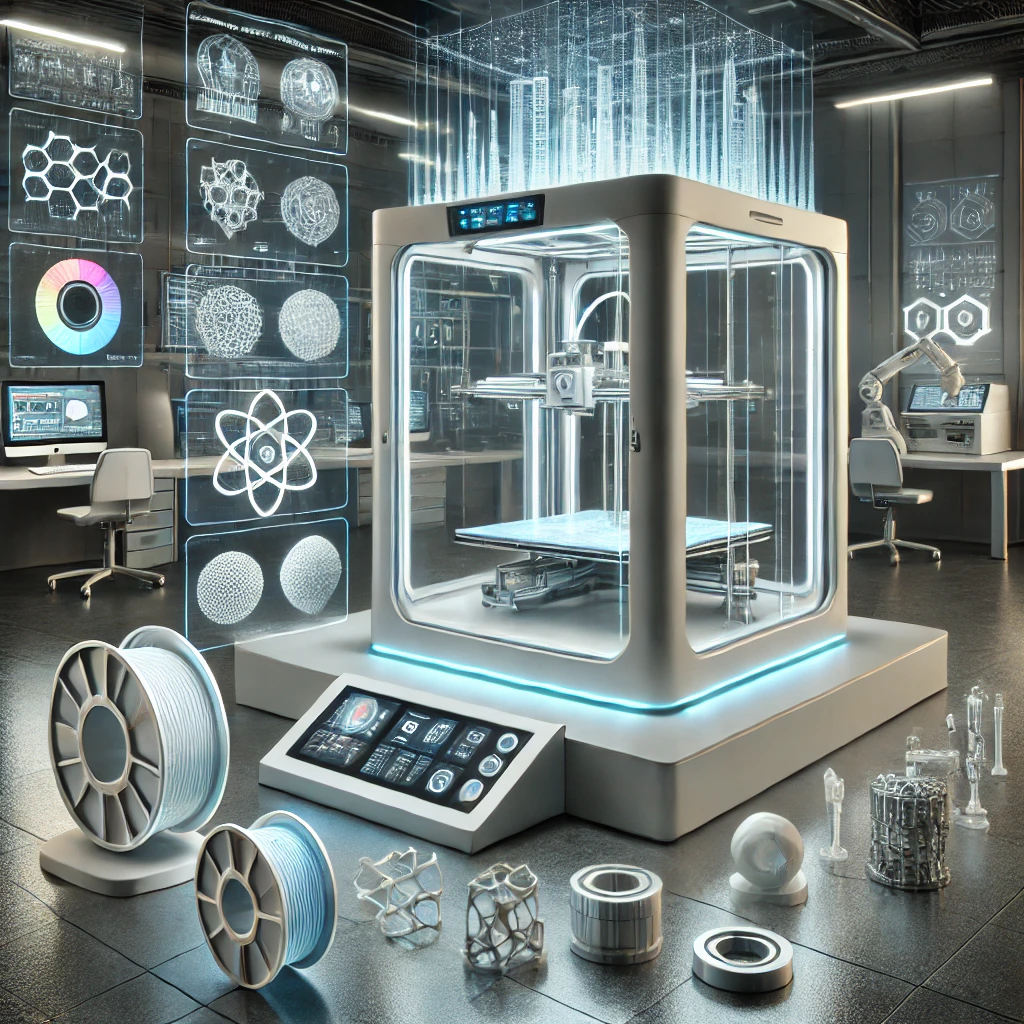
The future of 3D printing in manufacturing is incredibly promising, with the technology poised to transform various aspects of production processes, product development, and supply chains. Here’s a comprehensive overview of how 3D printing is expected to shape the future of manufacturing:
Customization and Personalization
- Mass Customization: 3D printing allows for the production of customized parts and products on a large scale without the need for retooling. This is especially beneficial in industries like automotive, aerospace, and healthcare, where tailored solutions are often required.
- On-Demand Manufacturing: The ability to produce items on demand reduces the need for large inventories, enabling companies to offer personalized products at a competitive price. For example, custom-fit medical devices or bespoke consumer goods can be produced quickly and efficiently.
Supply Chain Disruption
- Localized Production: 3D printing enables manufacturers to produce goods closer to the point of use, reducing shipping costs and lead times. This could lead to a more decentralized manufacturing model where parts are printed locally rather than mass-produced in central factories.
- Reduced Inventory Costs: With the ability to produce parts as needed, companies can minimize stockpiling of components. This just-in-time production model reduces warehousing costs and the risk of obsolete inventory.
- Simplified Supply Chains: 3D printing can consolidate parts and assemblies into single components, reducing the number of suppliers and complexity within supply chains. This streamlining can result in faster production times and fewer potential points of failure.
Advancements in Materials
- Diverse Material Options: The development of new materials, including high-performance polymers, composites, and metals, is expanding the applications of 3D printing. Materials that mimic the properties of traditional manufacturing materials are making 3D printing a viable option for more industrial uses.
- Sustainability: Researchers are focusing on developing eco-friendly and recyclable materials for 3D printing. The ability to use bio-based materials or recycle old parts into new ones could significantly reduce waste in manufacturing processes.
Innovation and Design Freedom
- Complex Geometries: 3D printing allows for the creation of complex and intricate designs that would be impossible or too costly to produce with traditional manufacturing methods. This opens up new possibilities for innovation in product design.
- Lighter and Stronger Parts: In industries like aerospace and automotive, 3D printing can produce lightweight parts without sacrificing strength. This leads to improved performance and fuel efficiency in vehicles and aircraft.
- Rapid Iteration: The ability to quickly adjust designs and print new versions enables continuous improvement and innovation in product development. This agility is particularly valuable in industries that require frequent updates and customization.
Impact on Traditional Manufacturing Jobs
- Skill Shift: As 3D printing becomes more integrated into manufacturing, there will be a shift in the skills required. Traditional manufacturing jobs may decline, but there will be increased demand for workers with expertise in 3D printing technology, digital design, and material science.
- Collaboration with AI and Robotics: 3D printing is expected to work in tandem with AI and robotics to create highly automated and efficient manufacturing environments. AI can optimize designs for 3D printing, while robotics can handle post-processing and assembly tasks.
Sustainability and Environmental Impact
- Waste Reduction: Traditional subtractive manufacturing methods, like machining, can produce significant waste. In contrast, 3D printing is an additive process, meaning material is only used where needed, which greatly reduces waste.
- Reduced Carbon Footprint: The ability to produce goods closer to the end-user and the reduction in waste both contribute to a smaller carbon footprint for manufacturing operations.
- Healthcare: 3D printing is revolutionizing healthcare by enabling the production of custom implants, prosthetics, and even bioprinted tissues and organs. As the technology advances, we could see more widespread use of 3D printing in personalized medicine.
- Aerospace and Defense: The aerospace industry is already using 3D printing to produce lightweight, complex parts for aircraft. As the technology matures, it will likely play a more significant role in the production of critical components for both commercial and military applications.
- Construction: Large-scale 3D printers are being developed to print entire buildings or building components. This could lead to faster, more sustainable construction processes, particularly in disaster relief or affordable housing projects.
Regulatory and Standardization Challenges
- Quality Control: As 3D printing becomes more prevalent in manufacturing, there will be a need for standardized processes and quality control measures to ensure consistent and reliable output.
- Intellectual Property: The ease of copying and reproducing designs with 3D printing raises intellectual property concerns. Manufacturers will need to navigate these issues as the technology becomes more widespread.
Conclusion
The future of 3D printing in manufacturing is set to be transformative, offering significant advantages in terms of customization, efficiency, and innovation. As the technology continues to evolve, it will likely become an integral part of the manufacturing landscape, driving changes in how products are designed, produced, and delivered. Manufacturers who embrace 3D printing will be better positioned to meet the demands of a rapidly changing market and to capitalize on new opportunities in product development and production.
Sources:
https://fortune.com/well/2023/02/15/3d-printed-organs-may-soon-be-a-reality
https://www.medicaldevice-network.com/analyst-comment/3d-printing-human-organs
https://www.sciencefocus.com/news/breakthrough-3d-printed-organ-windpipe
https://www.sciencedirect.com/science/article/pii/S2665927122002490
Discover more from PrintCraft.gr
Subscribe to get the latest posts sent to your email.